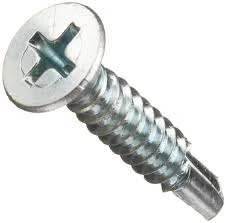Choosing the Right Screws for Chipboard Flooring Installation and Maintenance
Understanding Chipboard Floor Screws A Comprehensive Guide
In the world of woodworking and construction, selecting the right fasteners is crucial for ensuring the integrity and durability of a project. One specific type of fastener that has gained popularity in flooring applications is the chipboard floor screw. Understanding what these screws are, their unique features, and how to correctly use them can be beneficial for both professional contractors and DIY enthusiasts.
What Are Chipboard Floor Screws?
Chipboard floor screws are specially designed fasteners intended for use with chipboard (or particle board) flooring. Chipboard is an engineered wood product made from wood chips, sawmill shavings, or sawdust, which are bonded together using adhesives and pressed into sheets. This material is widely used in flooring systems due to its affordability and ease of installation. However, its porous and brittle nature can present challenges when it comes to fastening.
Chipboard floor screws are specifically engineered to tackle these challenges. They typically feature a sharp point for easy penetration, a threaded shaft for excellent grip, and a specially designed head that helps prevent the screw from sinking too deep into the material, which could compromise the integrity of the flooring.
Key Features of Chipboard Floor Screws
1. Self-Tapping Design Most chipboard floor screws are self-tapping, which means they can create their own hole as they are driven into the material. This feature not only simplifies installation but also reduces the risk of splitting the chipboard.
2. Coating and Corrosion Resistance Many chipboard screws are coated to enhance their durability. This coating protects against corrosion and ensures a longer lifespan, especially in humid environments or where moisture is a concern.
3. Threading The threading on chipboard screws is designed specifically for gripping into the particle board effectively. Coarse threads are common, as they allow for better holding power, which is vital for floor stability.
4. Head Design The head of the screw is usually flat or countersunk, allowing it to sit flush with the surface of the flooring. This is essential for achieving a smooth finish and preventing any protrusions that could damage foot traffic or flooring materials placed on top.
chipboard floor screws

5. Length and Size Options Chipboard floor screws come in various lengths and diameters, allowing the user to select the best option for their specific flooring needs. Generally, longer screws provide more grip and are ideal for thicker materials.
How to Use Chipboard Floor Screws
Using chipboard floor screws might seem straightforward, but following the correct procedure is essential for achieving a strong and stable floor installation.
1. Preparation Start by ensuring that the chipboard panels are clean and free from dust or debris. This step is crucial for a secure grip.
2. Drilling Pilot Holes While self-tapping, it can be beneficial to drill pilot holes for larger screws or in thicker panels to prevent any potential splitting. Use a drill bit that is slightly smaller than the diameter of the screw.
3. Screw Insertion Use a power drill or a screwdriver to drive the screws into the chipboard. Ensure that the screws are driven in straight to avoid any misalignment.
4. Spacing Maintain consistent spacing between screws, typically around 150mm to 200mm apart, depending on the flooring's requirements. This spacing helps distribute loads evenly across the floor and enhances its stability.
5. Checking Flushness As you secure each screw, make sure that the head is flush with the surface. If necessary, use a countersink bit to create a slight recess for the head of the screw.
Conclusion
Chipboard floor screws are invaluable in ensuring the stability and longevity of chipboard flooring installations. Their unique design features, such as self-tapping capabilities and corrosion resistance, make them ideal for various applications. By understanding how to properly use these screws, homeowners and professionals alike can achieve a solid and durable flooring solution. Whether you are renovating your home or working on a new construction project, investing in quality chipboard floor screws is a step towards successful flooring installation.
-
Wedge Anchor Bolts: Secure Fastening SolutionsTala FouAug.05,2025
-
Insulation Fixings: Secure and Durable SolutionsTala FouAug.05,2025
-
Full Threaded Studs: Versatile Fastening SolutionsTala FouAug.05,2025
-
Expanding Fasteners: Secure and Reliable SolutionsTala FouAug.05,2025
-
Butterfly Toggle Anchors: Secure and Easy to UseTala FouAug.05,2025
-
Bracing Solutions for Steel StructuresTala FouAug.05,2025
